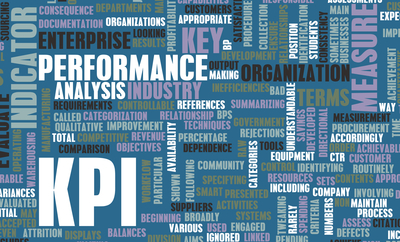After completing the first two steps in the performance management process, you now have the blueprint to ensure that your strategy is properly executed. Sharing that blueprint and getting commitment in Step 3 is the critical next step in the process. The larger the organization the easier it is for lower level managers and individuals to misinterpret, or in some cases, ignore the institutional goals and pursue their personal agendas. The ultimate goal should be that every employee is committed and focused on translating and adapting the institutional goals to their job functions every day that they come into work.
If you have successfully completed steps one and two of the performance management process, you and your leadership team should have a short list of goals (i.e., institutional objectives) that must be achieved and feel confident that if accomplished, you will be successful in achieving your strategic thrusts. When your organization is small, and your direct reports are the actual implementers, it is much easier to ensure that progress is being made and no one is off on any unproductive tangents. When I managed a laboratory of 75 staff and had 5 direct reports, I remember feeling very confident at the end of every planning meeting that the goals that were set and the KPIs to measure them were well understood by my direct reports and that it was easy to monitor performance.
However, when the organization becomes much larger, several additional layers of management are created. This makes it much more difficult to ensure that the institutional objectives given to the top management team are being properly executed at the lower levels of the organization. Most of us have participated in the parlor game where you pass on a specific piece of information to the person next to you and ask that they pass it on. After passing through several people, by the time it gets back to you, the original information is hardly recognizable! This is quite normal like the deterioration of a recording or disc after it has been played many times or errors in DNA after having replicated numerous times.
This is why it is important to pay close attention to step three in the process. The larger the organization the easier it is for lower level managers and individuals to misinterpret, or in some cases, ignore the institutional goals and pursue their personal agendas. The ultimate goal should be that every employee is committed and focused on translating and adapting the institutional goals to their job functions every day that they come into work. Remember that if the institutional goals are met, it will ensure the success of the organization’s strategy. It’s that important. As I have mentioned previously, a good rule of thumb is that 70% of all employees should be at least 70% aligned with the institutional objectives. Where do you think your organizations stands on this KPI?
Some useful practices to follow to ensure this level of alignment are as follows:
The number of Institutional objectives should be small.
Too many managerial leaders feel a need to overhaul their entire organizations during a change initiative. This requires the establishment of too many goals. When there are too many priorities in a strategic plan, there are no priorities at all. It becomes nearly impossible to put the time and energy into achieving more than about five organizational goals.
The objectives should be crystal clear.
As demonstrated by the parlor game above, transmitting information through multiple layers of an organization is fraught with difficulty. The simpler the institutional objective is to describe and the smarter the KPI is, the higher degree of success that can be achieved. A common acronym SMART is often used to describe an objective; Specific, Measurable, Attainable, Relevant, and Time bound.
You should review the objectives of each of your manager’s direct reports.
As I have mentioned, if the organization is small, you can feel confident that your direct reports are focused on implementing the institutional goals and can monitor their execution directly. As the organization gets larger and multiple layers of management are created, it becomes more and more difficult to ensure that the appropriate objectives have been cascaded down the organization and properly translated by each manager. In other words, how can you be sure that every employee’s objectives are directly related to supporting the company’s institutional objectives?
A useful approach is to adopt a “one over one” approval system. Your direct reports sign off and approve their staff’s performance goals and you review them. This small increase in effort allows you to ensure that there is good alignment at least two management layers below you. By reviewing the performance goals of your direct report’s staff and discussing any misalignment issues, you can coach your direct reports of the importance of focusing on the KPIs of the institutional goals. Your direct reports can then repeat this process two layers below them. In this way, you have built in a good quality control check at each management level. Remember the ultimate goal is to have every employee come to work each morning knowing that what they are working on is contributing to the organization’s strategic agenda.
At the end of step 3, you should feel confident that you now have a plan that will ensure success and that everyone in the organization is committed to its execution.




Leave A Comment